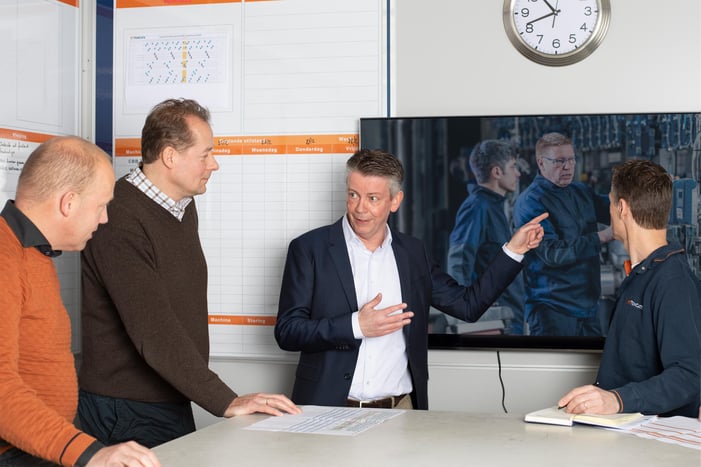#3. Build an emotional commitment
Help your workers find their intrinsic motivation with an emotional angle to safety. For instance, remind your workers to promise their family each morning that they’ll return home safe that night. Wearing their protective clothing correctly becomes a way they can fulfill their promise to their loved ones.
#4. Focus on the wearer’s needs
While it may seem efficient to launch a new protective clothing tender based on the same technical specs you needed in the past, it’s much smarter to take stock of your wearers’ current needs (ie. for good-looking, breathable garments they can move comfortably in). If you involve your workers early in the selection process to voice their preferences, they’re much more likely to wear the protective clothing later on. Creating wearer buy-in is key to moving toward zero injuries.
#5. Take every opportunity to educate
Perhaps your company organises a yearly Safety Day campaign, or maybe you share best practices during quarterly meetings. Experience, however, shows that the key to making safety education stick is repetition — the more often, the better! Try implementing a daily standup meeting with your team, and always include a point on safety to keep it top of mind throughout the day ahead. It’s their life they’re putting in danger when they choose not to wear protective clothing correctly.
#6. Create a safe space for feedback
A standup meeting is also the perfect place to cement openness into your company’s safety culture. Why don’t people wear their protective clothing correctly? Because it’s hot, heavy or uncomfortable. But how often is this kind of honest feedback from your workers actually welcomed? Open the floor for them to raise any potential issues preventing them from working comfortably, and show them that you value their insights.
#7. Help workers understand their gear
When you roll out a new range of protective clothing, take the time to visit each department and clearly explain the features and benefits of the new garments. A welder may not feel safe wearing a comfortable lightweight FR jacket, for instance, if he’s previously always worn heavy garments made from traditional solutions. He’ll only wear the new solution confidently if he understands how it protects him.
#8. Trigger collective behavior and responsibility
Self-preservation is a basic human instinct, but team thinking is ultimately the only way to work towards a zero accident workplace. Encourage your workers to look out for each other and challenge each other if they see that a rule isn’t being followed (as well as report it) . Keeping everyone safe means keeping yourself safe, and vice-versa.
Zero injuries starts here
It all comes down to helping your workers feel invested in their own safety and the safety of others around them. Make the effort to build a high level of awareness on how to correctly wear and take care of their protective clothing, and involve them every step of the way by keeping their needs central. Then get ready to see your strong safety culture reflected back in fewer injuries.
Committed to building a stronger safety culture at your company? Learn how in our 6 Industry Trends report below.
![6 Industry trends [EN]](https://eu.tencatefabrics.com/hs-fs/hubfs/EU%20-%20Images%20website/EU%20-%20Mock-up%20nieuwe%20afmetingen/6%20Industry%20trends%20%5BEN%5D.png?width=170&name=6%20Industry%20trends%20%5BEN%5D.png)
Read our trend report
Learn about 6 important industry trends and improve the safety and comfort of your protective clothing:







.png?width=399&name=Risk%20management%20for%20PPE%20clothing%20in%20the%20EV%20and%20battery%20industries%20(5).png)
